1984 Quarter Coin Value: How Much Is It Worth?
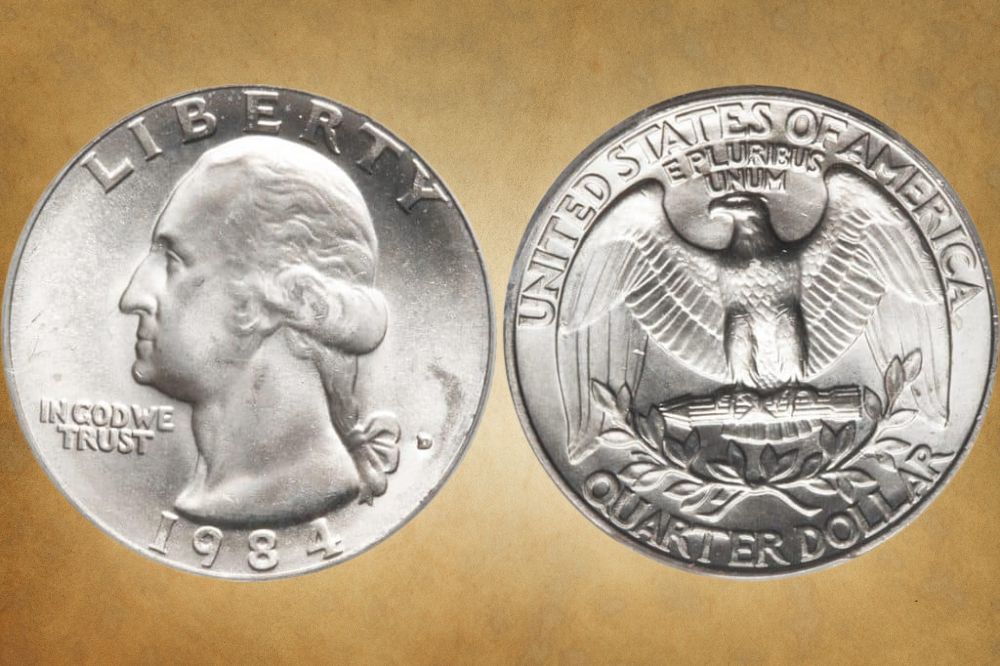
You may think of 1984 as a dystopic novel by George Orwell. And if you read it, you may be rattled by its parallels to the world we live in today. But we’re talking numismatics here, so we’re interested in the 1984 Quarter Value. Let’s look into this 25-cent coin and learn more.
1984 Quarter Value Chart |
|||
| Mint Mark | Good (G 4) | Mint State (MS 65) | Proof (PR / PF 65) |
| 1984-P Quarter Value | $0.25 | $11 | No P-Proofs |
| 1984-S Quarter Value | $0.25 | $0.25 | $4.52 |
| 1984-D Quarter Value | $0.25 | $13 | No D-Proofs |
1984 Quarter Value Guide
Aside from mint marks, the value of a coin is based on its condition. You’re probably familiar with the common grades, but a few extra ones that might puzzle you are PL and DPL. These NGC grades (Numismatic Guaranty Company) describe mirrored coins that aren’t proofs.
PL is for Proof-Like and DPL stands for Deep-Proof-Like. Some other designations are RB, RD, FB, or FS, but we won’t discuss them here because they don’t apply to Washington Quarters. Now let’s define the values of a 1984 Quarter based on its minting location.
1984-P Quarter Value
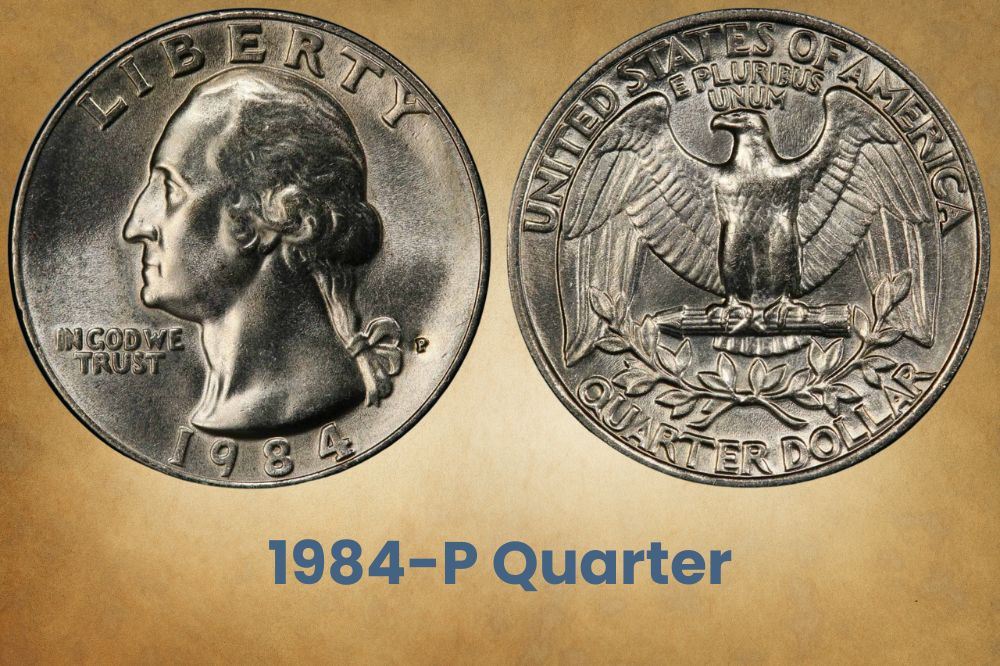
Starting in 1979, Philadelphia finally got its own mint mark. So in 1984, the Philadelphia Mint made 676,545,000 Washington Quarters with the P Mint Mark. In MS 66, the coin is worth $180, but one grade higher in MS 67, this 1984-P Quarter sold for more than $1,200.
1984-S Quarter Value
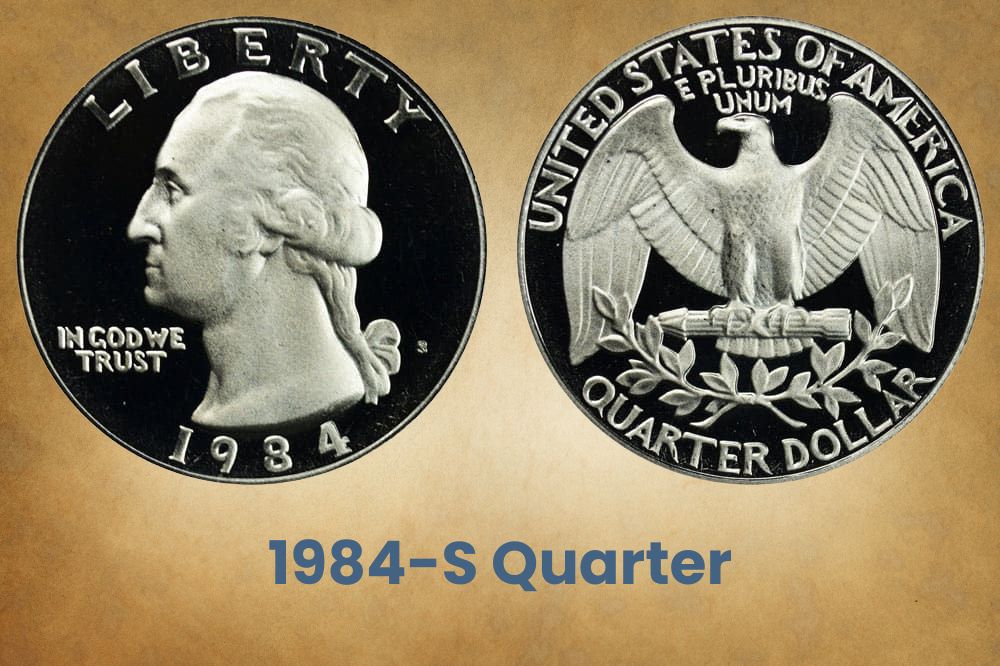
In 1984, the San Francisco Mint made 3,065,110 Proof Coins with the S Mint Mark. Proofs are usually made for collectors and archiving purposes, so the planchet is pre-polished and the die is dipped in special chemicals. These additional processes are what give proof coins that mirrored field and frosted device. The first 50 to 100 are the shiniest sample coins.
They’re graded as Deep Cameo (PGCS) or Ultra Cameo (NGC). The rest of the coins are graded Cameo because they still have a distinct contrast, but they aren’t as shiny as D-CAMs or U-CAMs since the burnish and chemical die are starting to wear out. In the perfect grade of PR 70 DCAM, this coin is worth $160. Incidentally, NGC grades proof coins as PF, not PR.
1984-D Quarter Value
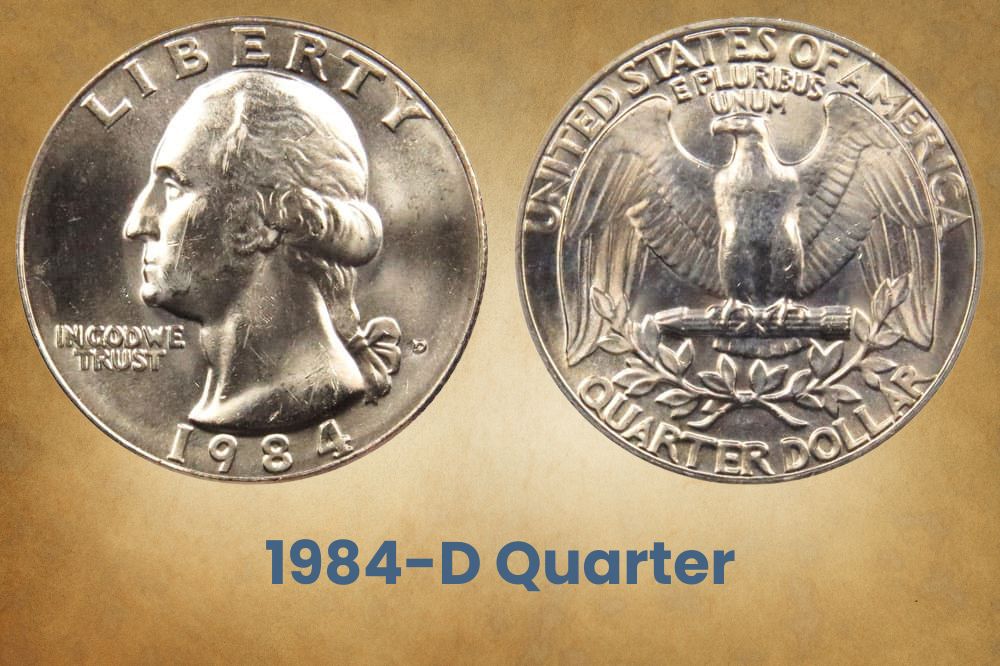
The Denver Mint made 546,483,064 Washington Quarters in 1984. In MS 66, this coin is only worth $65 but one grade higher at MS 67, the 1964-D Quarter sold for around $760.
Related Posts: 17 Most Valuable Modern Quarters Worth Money
1984 Quarter Errors
You probably toss your change in an old ashtray and forget about it. Or maybe you give it to panhandlers. But coin errors can be worth a lot of money, so before you dismiss those 25-cent coins, it might be helpful to inspect them. Below are a few quarter errors worth keeping.
1984 Quarter Broadstruck Error #1
All coins have a collar – the raised rim that gives a coin its perfect spherical shape. This collar is minted via three detachable collar molds, and if any of them falls off too soon, you get a broadstruck error. The coin may spill over and become flat and misshapen in the section where the mold slipped off. In MS 64, this 1984-P Broadstruck Error is worth $15.
1984 Quarter Broadstruck Error #2
Sometimes, a single grading digit can raise the value of a coin. But that’s not always the case. This second broadstrike is MS 65, just one step above the previous one. This only added $10 to the evaluation though, and the coin sold at around $25. And while the earlier coin was broadstruck to the mid-left, this error was on the upper sections of the coin. It’s shinier too.
1984 Quarter Double Struck Error
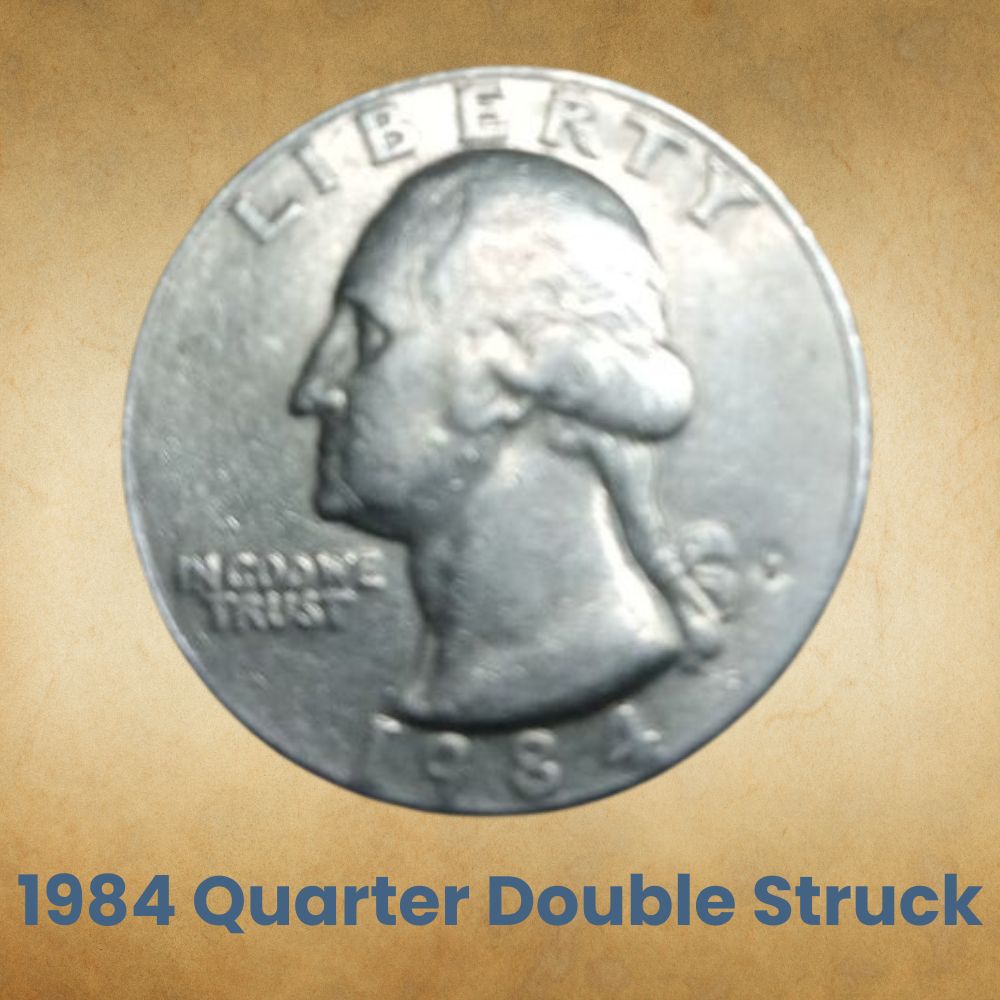
Coins have a lot of important details, so they have to be struck multiple times to render them accurately. But sometimes, the planchet shifts between strikes. If the second or third strikes aren’t in the exact same spot, you get a double strike or triple strike error. In this case, the second strike was off-center so it deformed the coin. In MS 64, the coin sold for about $160.
1984 Quarter 15% Off-Centre Error
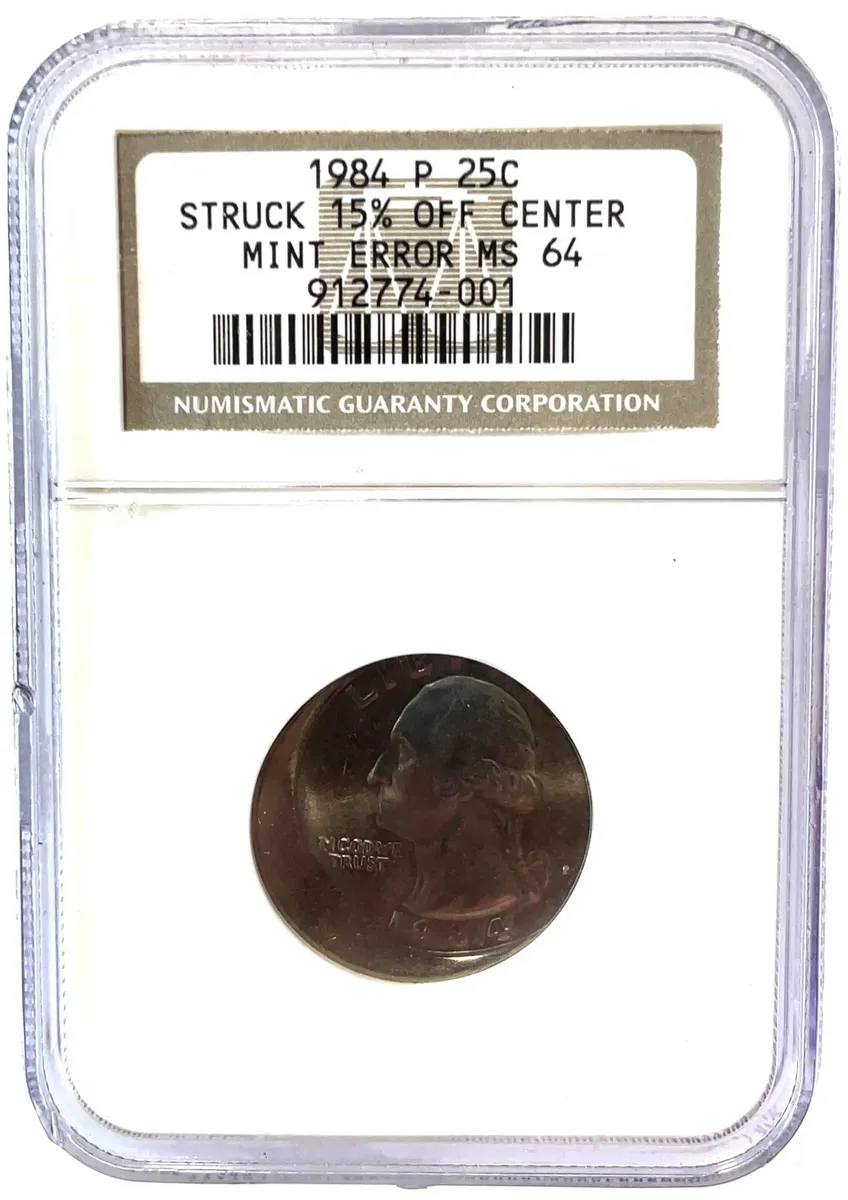
A double or triple strike happens when subsequent strikes are misaligned. But if it’s the first strike that was unfocused, you get an off-center error that leaves part of the planchet blank. The error is assessed based on the angle, and this one was 15% off-center, leaving a blank on the lower left obverse and the upper left reverse. In MS 63, this error is barely worth $40.
1984 Quarter 75% Off-Centre Error
An off-center error can be subtle and barely noticeable or quite drastic. But this doesn’t always translate into massive shifts in value. This MS 64 coin has a dramatic off-center error that leaves the lower obverse and upper reverse blank. The coin is also misshapen into a soft figure-eight due to the planchet shifting between strikes. Still, the error is only worth $60.
1984 Quarter 10% Off-Centre Error
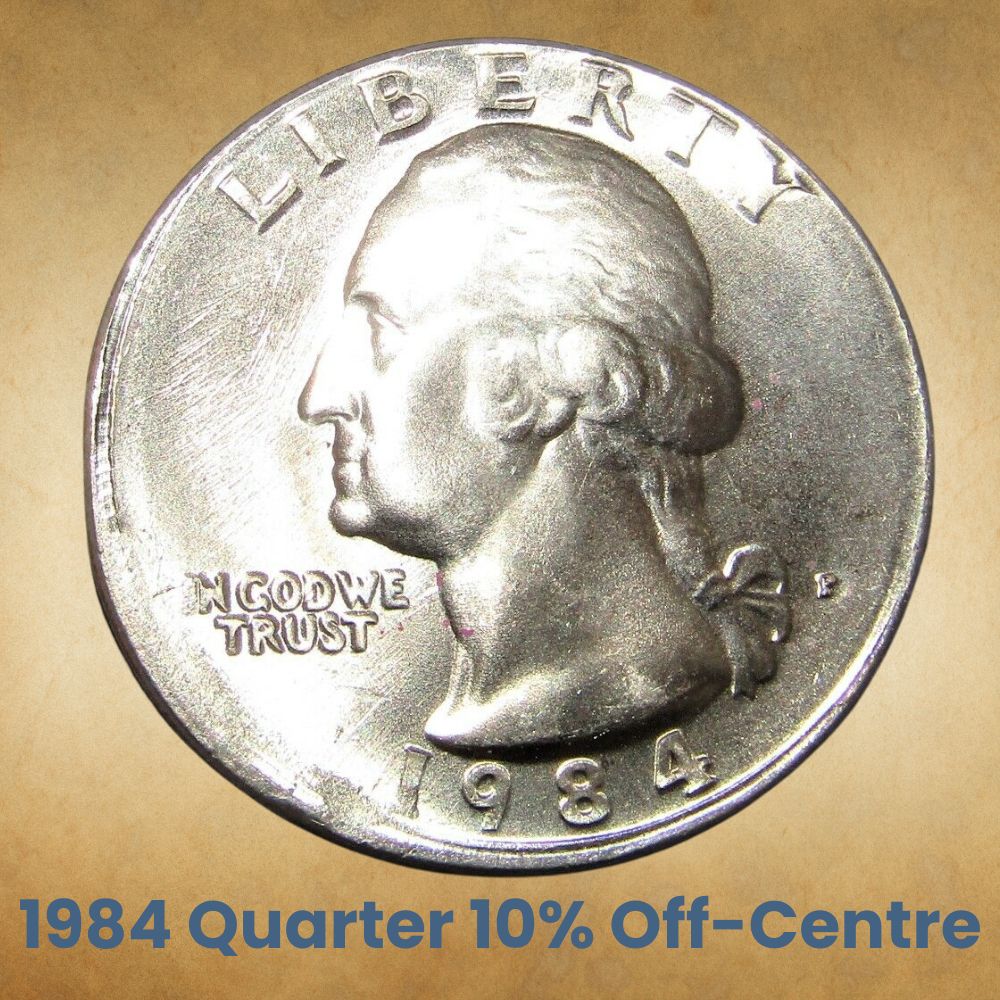
For comparison, here’s a 1984 Quarter that’s just 10% Off-Centre. This time, the blank area is on the lower right obverse and the upper right reverse. And it’s a high-grade coin at MS 66. But because so many coins exist in mint state grades of MS 65 and MS 66, the ubiquity of these quarters keeps the prices low. As a result, this clearly visible error is only worth $80.
1984 Quarter BIE Error
To make a coin, a master hub strikes a master die, which strikes and working hub, which then strikes multiple working dies. And these working dies are used as long as possible. Towards the end of their lives, they develop cracks and breaks called cuds that transfer onto coins. The BIE is a cud error that adds an I-looking slash between the B and E in Liberty.
Related Posts: 16 Most Valuable Quarter Errors
History of the 1984 Quarter
Over its lifetime, the United States of America has used multiple coins ranging from 1c to $20. But today, the five coins in circulation are 1c (penny), 5c (nickel), 10c (dime), 25c (quarter), and 50c (half dollar). We also have a $1 coin, but just like the $2 bill, people don’t like it much, so the two mostly live in bank vaults. Small denominations are marked in cents.
This means the back of the coin reads One Cent, Five Cents, and Ten Cents. But the 25c and 50c coins are marked in dollars, so they read Quarter Dollar and Half Dollar. In earlier years, quarters were made of silver, but starting 1965, we switched to the clad cupronickel Johnson Sandwich. These coins were named for Lyndon B. Johnson, the 36th President of the USA.
The sandwich was introduced to stop the coin shortage of the 60s. It was caused by people hoarding silver coins as bullion due to the high spot price of silver at the time. This price hike made the melt value of silver coins higher than their face value, so citizens started silver stacking en masse. As a by-product, base-metal coins got hoarded too, purely out of habit.
In earlier years, coins were designed by in-house mint engravers, and they often used the same design for multiple coin denominations. Popular series like the Flowing Hair, Draped Bust, Capped Bust, Standing Liberty, Seated Liberty, Classic Head, and Barber designs were shared by dollars, half dollars, quarters, dimes, half pennies, large pennies, and even nickels.
Democracy vs Monarchy – The Washington Mandate
Since these coins had identical obverses and reverses, the difference was in their sizes, edges, and their metal compositions. Some had denticles and reeds while others had smooth rims. Then starting in 1932, the Washington Quarter was introduced. You should note that the man himself was against having American Presidents in coins. He felt this was too colonial.
But two centuries after his birth, and with the Lincoln Penny setting a precedent, George Washington was placed on the 25c coin to celebrate his bicentennial birthday. This is not to be confused with the American Bicentennial in 1976, celebrating 200 years of independence from the British. Also, note that Washington had been on the $1 bill since way back in 1869.
The Quarter has gone through multiple variations over the years. These include the 50 State Quarters (1999 to 2008) that had a localized reverse for every US State. Others include America the Beautiful Quarters, Crossing the Delaware Quarters, and American Women Quarters. The original reverse was designed by John Flanagan and used from 1932 to 1998.
Sometimes spelled as Flannigan, this sculptor’s obverse portrait was based on an earlier bust by Jean-Antoine Houdon done in 1786. From 1998 to 2022, the quarter used an alternate right-facing obverse by Laura Gardin Fraser, plus various commemorative reverse designs. Flanagan’s obverse was slotted to return after 2022, though the reverses would stay mixed.
Related Posts: Top 10 Most Valuable Bicentennial Quarters Worth Money
How to identify 1984 Quarter?
Before we dig into the features of the 1984 Quarter, let’s go over a little jargon. The heads side is called the obverse. The tails side is called the reverse. The words are called legends or mottos, while the pictures are called devices and the backdrop is called the field. The blank disc that forms the coin is called a planchet. Planchets come from sheets punched into discs.
The Obverse of the 1984 Quarter
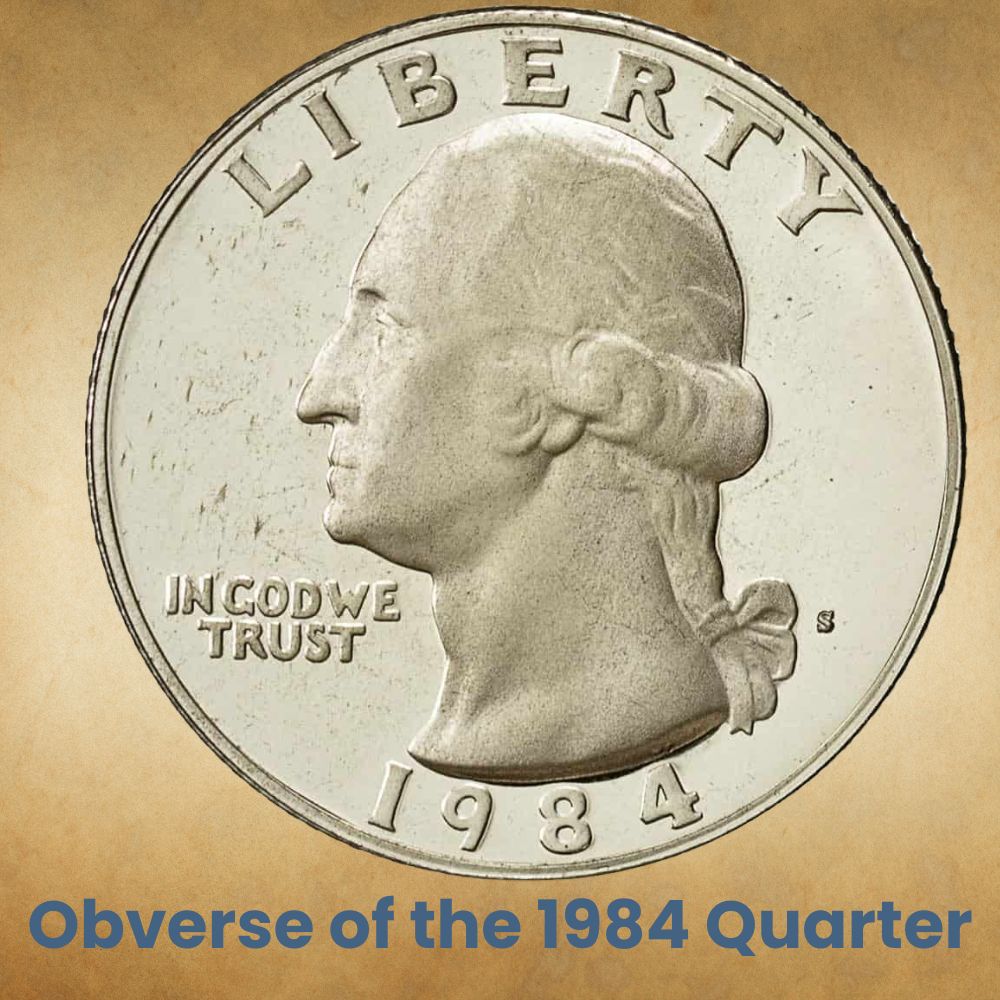
The obverse (heads side) of the 1984 Quarter has a portrait of George Washington facing left. It only displays his head and neck. The mint mark is on the lower right, next to the ribbon in his ponytail. The top of the coin has the legend Liberty tightly cropped along its upper collar.
The lower left of the coin has the motto In God We Trust next to his Adam’s apple. The mint date runs along the lower collar of the coin in a large blocky font. The initial of the coin’s designer, JF for John Flanagan, is stamped at the neckline, above the last digit of the date.
The Reverse of the 1984 Quarter
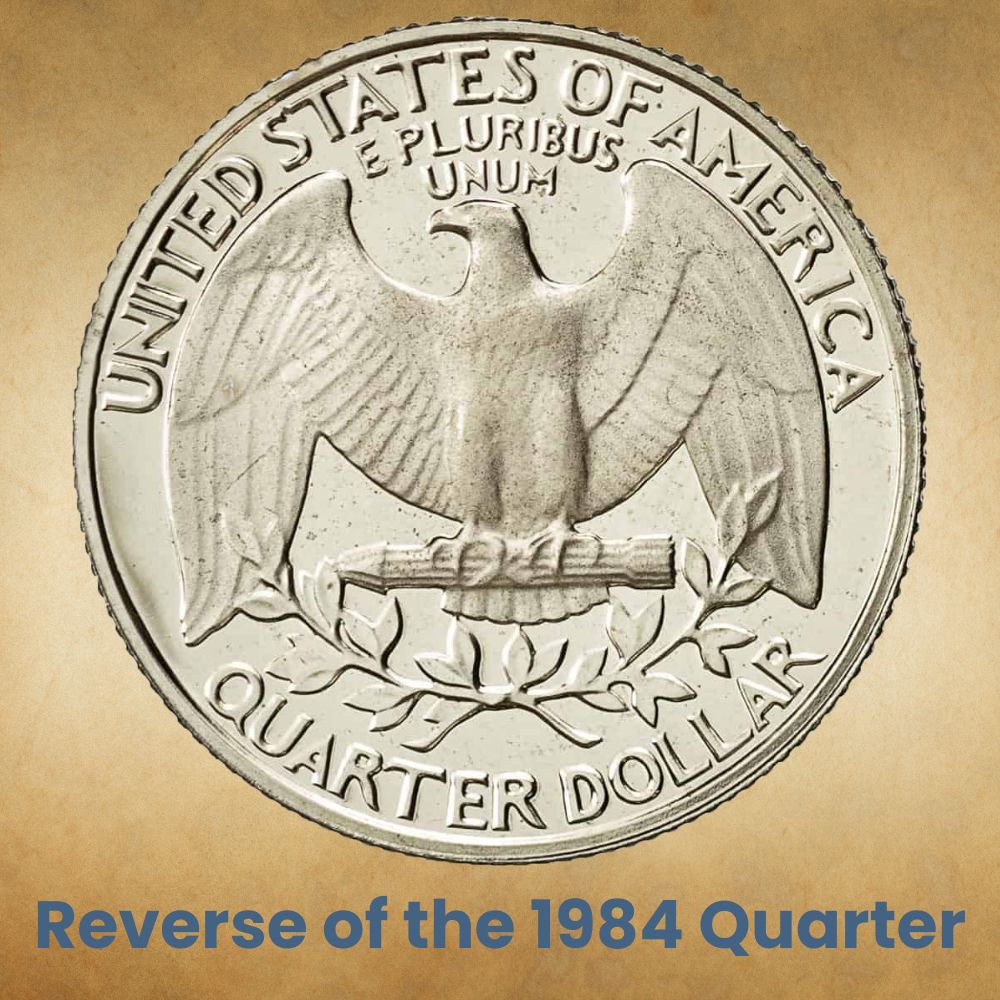
The reverse (tails side) of the 1984 Quarter features a perched eagle. Its wings are spread out, and it has 13 arrows clutched in its talons. The arrows represent the original 13 States that formed the US Republic. An olive branch lies beneath the arrows, touching the eagle’s wings.
This coin is quite tightly packed. The top of the coin has the legend United States of America almost grazing the tops of the eagle’s wings, and E Pluribus Unum is squashed just above its head. The bottom of the coin shows the coin’s denomination, Quarter Dollar. That’s 25 cents.
Other Features of the 1984 Quarter
When you’re looking at Washington Quarters, the date defines the mint mark. Most have the mint mark on the lower right obverse, but Silver Quarters have it at the back, below the olive branch on the reverse. 1984 quarters are 24.3mm in diameter, 1.75mm thick, and weigh 5.67g.
They had a copper core of 99% with a top coat of 75% copper and 25% nickel, so their total metal composition was 91.67% copper and 8.33% nickel. They have 119 reeds along the edge. Since this coin is fairly recent and quite common, most samples are only worth face value.
Related Posts: 20 Most Valuable State Quarters Worth Money
FAQs About the 1984 Quarter
Is a Quarter from 1984 Worth Anything?
In the coin reselling world, older coins are more valuable because of their rarity. But 1984 is barely two decades ago, so the coins are still available in plenty and aren’t worth much. You can easily find one in your change, so in high grades, a 1984 Quarter is barely worth $10.
What is the 1984 Quarter Error?
The 1984 Quarter doesn’t have any remarkable errors, but some common ones include the BIE cud error, off-center errors, broadstrikes, and off-center strikes. None of these coin mistakes are especially valuable, and they only raise the price of the coin by $10 to $150.
How Much Silver is in a 1984 Quarter?
The 1984 Quarter has no silver content. It’s a clad coin that’s 91.67% copper and 8.33% nickel. Silver quarters were only made from 1932 to 1964. The silver version was 90% silver and 10% copper. It had the same 24.3mm diameter but was slightly heavier at 6.25g.
The only other silver quarters were commemorative bullion pieces such as the American Bicentennials dated 1776 – 1976, which were 40% silver; the proof set quarters from 1992 to 1998; and America the Beautiful bullion quarters from 2010 to 2021. These were 90% silver.
Related Posts: 21 Most Valuable Quarters In Circulation

I believe I have a very rare 1984 p quarter. Errors-filled mint,in god we trust,ty in liberty,mold seems to pour over the y, and the back side is full of errors. Very easy to see
Incredible information thank you!